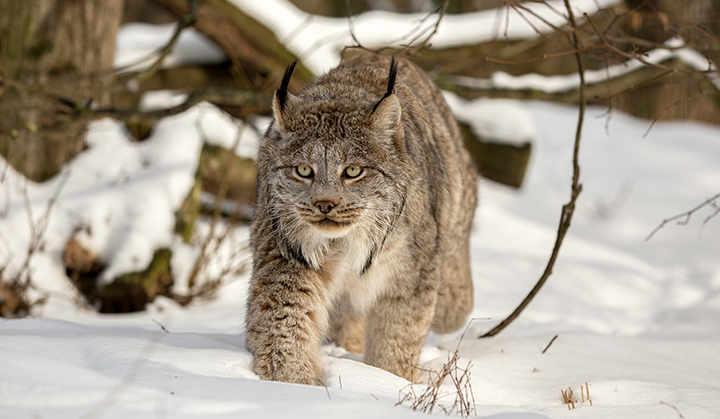Species finding ways to survive with snow, and how we can help them out
People aren’t the only snow-seekers in the vast Yellowstone to Yukon region. From your backyard to the forests of the Rocky Mountains, the landscape is teeming with wildlife going about their business — even if you don’t see them.
Rare wolverines and mountain caribou, bobcats, fishers, porcupine, mountain goats, grizzly bears and many other species rely on habitat throughout the region.
Winter is a great time to spot signs and tracks of wildlife that have passed through. Not only is learning about the wintry ways of wildlife fascinating, sometimes knowing which species made their imprint on the landscape can be a way you can contribute to important research about them.
Knowing where wildlife go helps us understand what they need to thrive. As supporters of and donors to the Y2Y mission, your investment helps us respond to those needs. Join us as we explore how different species rely on and survive in the snow, some of the challenges they are facing and how you can help.
Who left that track?
WAS IT A COUGAR?
Even though you have probably never seen one, these big cats are quite the wanderers.
Cougar tracks are large, with four toes and one paw pad. Often the toes will look like they “fit” within the larger paw pad. With coyotes and dogs, if you imagine the toes are together, they will often be larger than the paw pad.
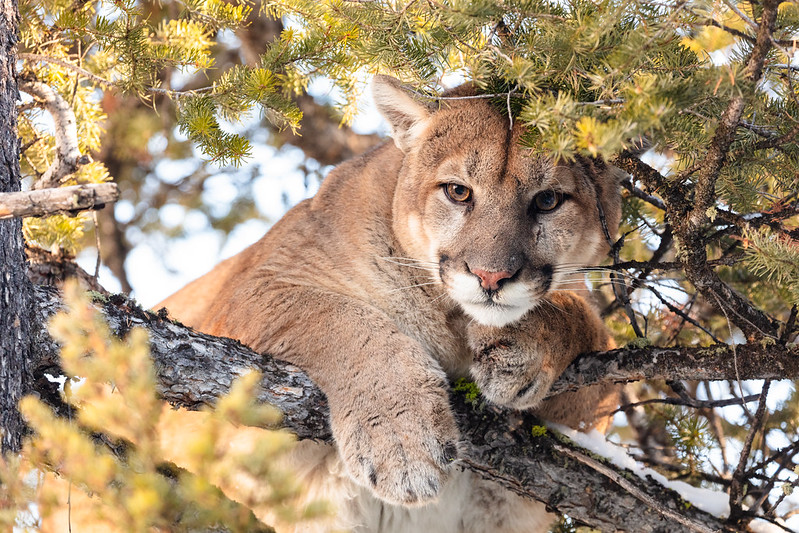
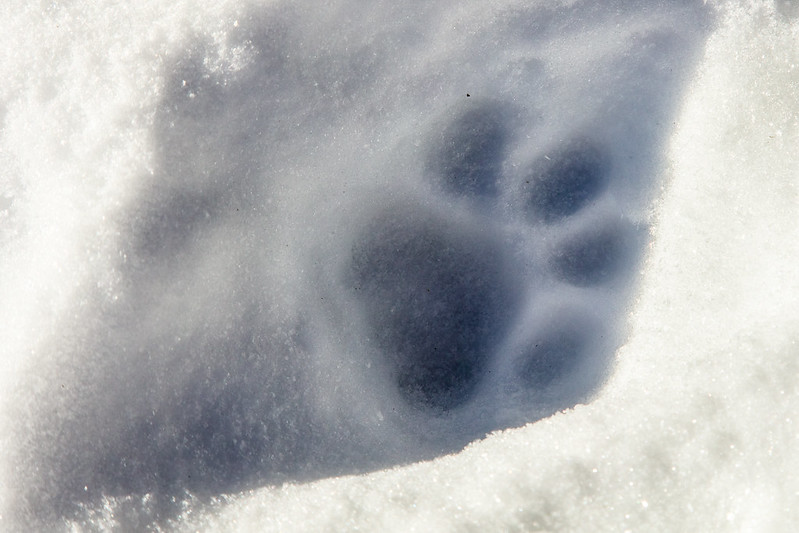
WAS IT AN ELK?
Elk tracks look similar to other hooved animals, but tend to be larger than deer and rounder than moose. Hooves are split, with two toes. Also, look for two dots near the back of the track. These are called dew claws and are used for extra traction, especially in snow.
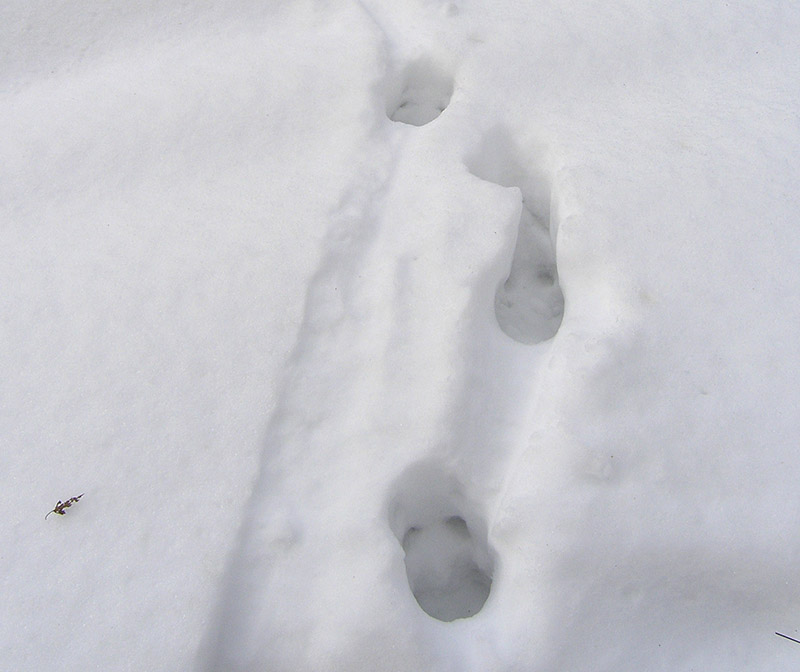
WAS IT A BEAR?
In winter both grizzly and black bears can awake from their dens for short periods of time, since they are not true “hibernators.” Bear tracks have five toes, but sometimes it’s hard to see the outside toes in tracks. Often the hind foot prints are easy to see, while the front prints are harder to make out.
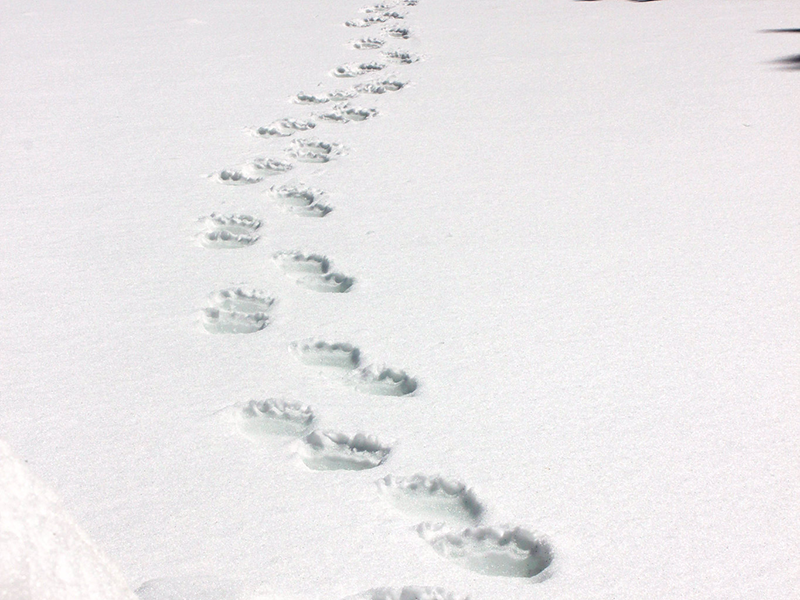
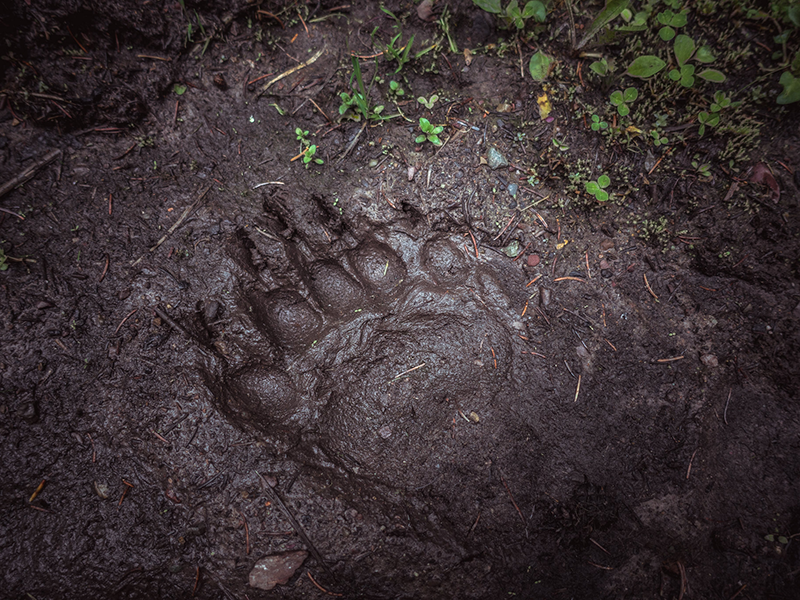
WAS IT A COYOTE?
The tracks of coyotes can look similar to dogs, with four toes and a pad. The best way to distinguish is to look at the pattern of movement. Dogs will often wander to and fro, but coyotes have a much more direct route, as they need to conserve energy.
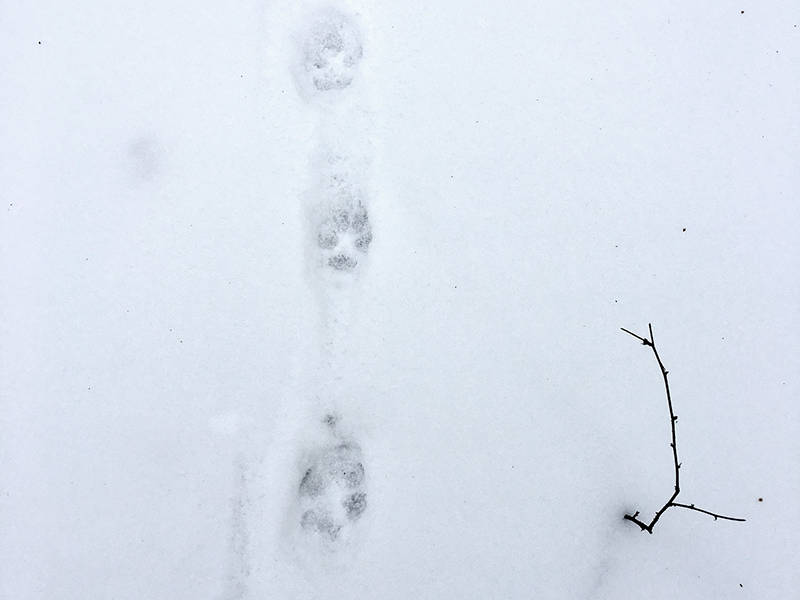
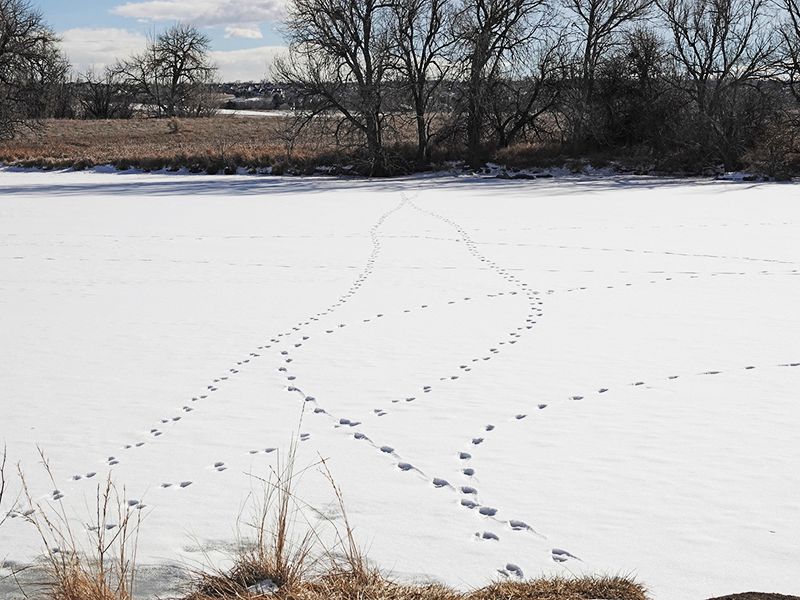
WAS IT A WEASEL?
Weasels are often hard to find signs of as they are small and dip under and above snow. Often tracks appear in sets of two, as these tiny carnivores bound around.
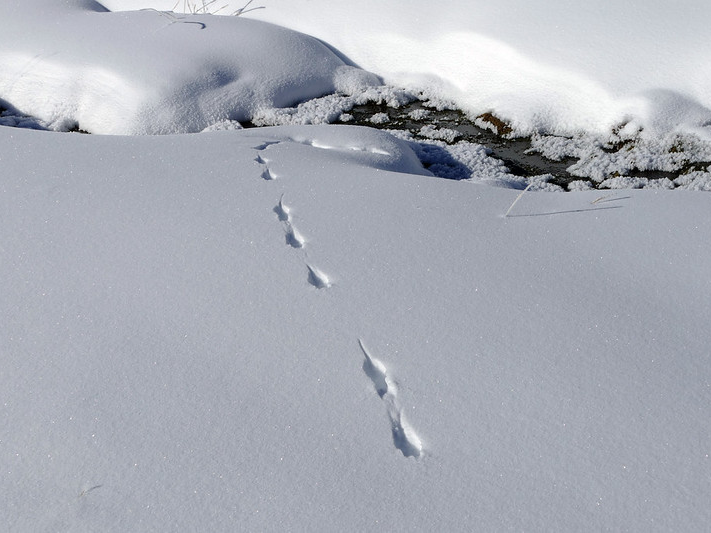
WAS IT A WOLVERINE?
Wolverine tracks are distinct, often in a 2×2 or 3×3 pattern, in long, straight lines.
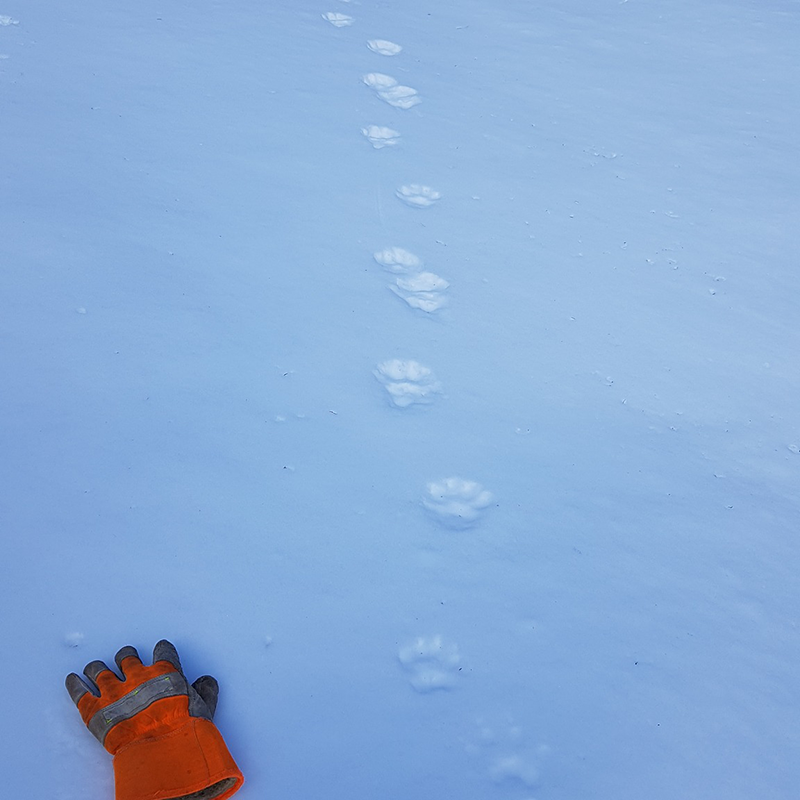
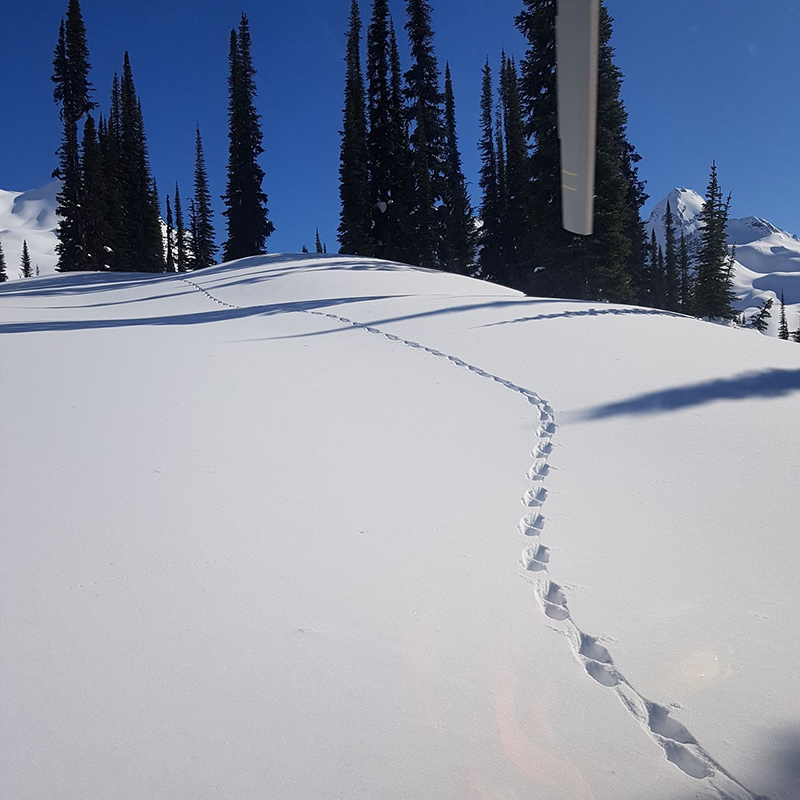
Dens are deep holes in the snow, about 30 centimeters across. What helps set them apart from other holes are multiple tracks going to and from the hole and being near the treeline.
Female wolverines are extremely sensitive to people. If you see a den or even fresh tracks, take a photo and then leave the area right away. Even one person can cause a female to abandon her den!
If you recreate in Alberta’s Rockies or the mountains of southeastern B.C., you can report your sighting to our partners at Wolverine Watch.
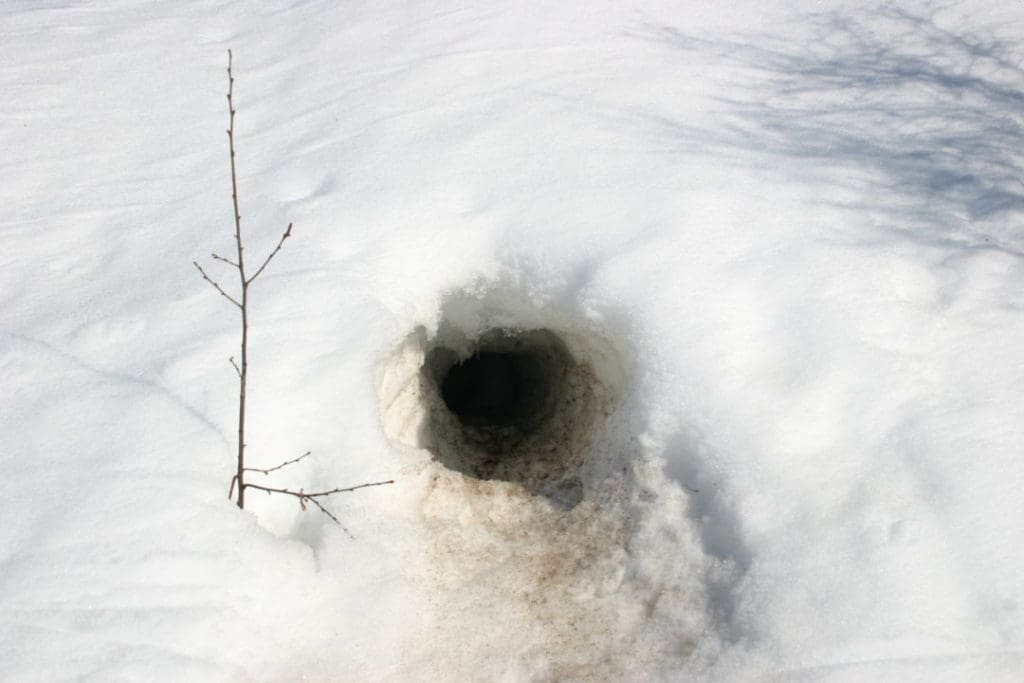
Species surviving with snow
In the winter when icy temperatures can chill you to the bone, frost coats your eyelashes and brows and venturing outdoors means layering up like an onion, do you ever wonder how wildlife manages?!
Sure, biological sciences can answer that question; but the ways in which plants and animals adapt to, survive and thrive in snowy spaces are, nonetheless, amazing. Think about some of the species found in the Yellowstone to Yukon region, including some of those whose tracks you learned about above.
As food becomes sparse, grizzly bears prepare for seasonal slumber by digging dens on the sides of slopes or in the base of big trees. Their metabolism drops so low to preserve energy that a den with good drainage in an undisturbed spot helps them make it until spring — perhaps even emerging with a cub.
New global research confirms that female wolverines need deep snow and solitude to den and produce healthy babies. They rely on cold temperatures to keep snowpack around through spring.
Other medium carnivores such as foxes and coyotes know there’s a buffet of tiny rodents under the snow (in what’s called the ‘subnivean zone!’) Using their stellar sense of smell, they sniff out their next meal and pounce into the snow to attempt a catch.
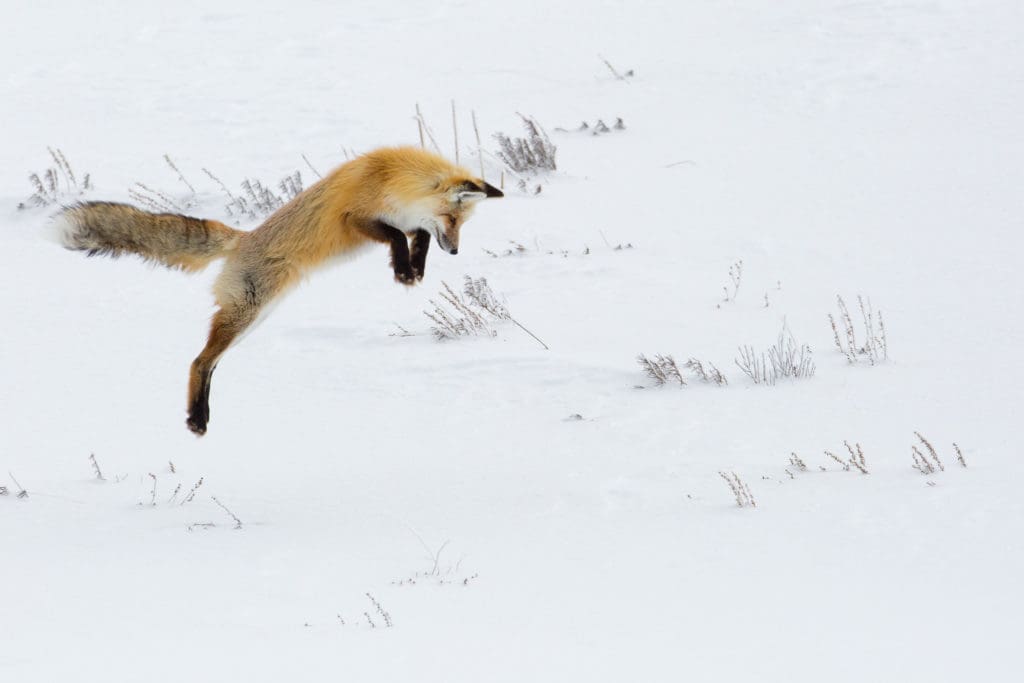
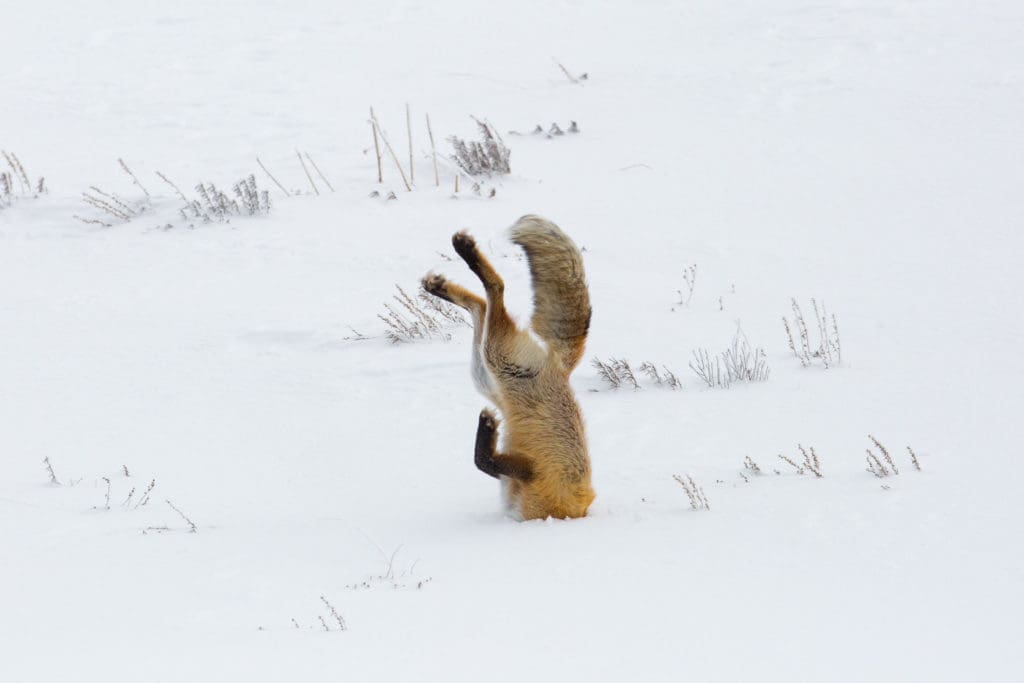
Whitebark pine trees need cold winters and a good snowpack for the plant and seedlings to survive and thrive. In fact, these ancient, rare and endangered trees are found at the highest and coldest locations across the Yellowstone to Yukon region.
Some frogs freeze themselves solid since they can’t travel long distances to escape the winter. They do this by nestling under natural debris, and start producing a sort of anti-freeze in their blood. When the weather warms, the frogs thaw and emerge.
Lichen is a vital winter food source for caribou. This species live in places where other ungulates may not be able to survive because there’s not much other food. In the winter, mountain caribou of southeastern B.C. depend on horsehair lichen found draping from the branches of fir, spruce, and pine trees.
The mere size of caribou’s big hooves allows them to stand atop deep snow and reach lichen growing on tree branches. They also use their hooves to dig through snow and locate different types of lichen on the ground.
Then there’s the lynx: they have evolved to endure cold, snowy winters. Lynx have big, wide paws — almost like snowshoes — that help them stabilize on deep snow terrain. One of their main sources of food also happens to be the snowshoe hare.
What happens when there’s less snow and space?
With more rampant wildfires, floods and other extreme weather, we know that climate change is having an impact on both people and wildlife during all seasons. Our changing climate is making it harder for wildlife to find food and shelter, and some of the other ways they rely on snow and cold less reliable.
Overall warmer temperatures melt snow earlier than ever before. More precipitation falls as rain instead of snow, making snowpack shallower in the winter and spring. This is also changing thaw and freeze cycles, which, for example, makes it harder for caribou to break through icy crusts on top of the snow.
Landscape changes and habitat loss due to human development, as well as increasing access to wildlife habitat through recreation and other means, are also some of the biggest drivers of biodiversity loss in North America and around the world.
All of this means there is less high-quality habitat for species throughout the Yellowstone to Yukon region. Ensuring connectivity between habitats is more critical than ever — animals need to be able to move to find ways to adapt to climate change and growing human populations.
Ensuring connectivity between habitats is more critical than ever — animals need to be able to move to find ways to adapt to.
Making conservation decisions through a “large landscape” lens for wide-ranging wildlife, and planning for ways to allow species to move and adapt, is what Y2Y does best with the help of hundreds of partners.
In north Idaho, Y2Y has been a part of a multi-year, climate-adaptation focused habitat restoration project with partners called “Bees to Bears.” Through the planting of nearly 50,000 native trees and shrubs, restoration of streambeds, and other adaptations, this area can keep its cool for people and wildlife such as the western toad, grizzly bears and native bumblebees.
In southeastern B.C., we are working to preserve another natural “climate refugia” in the Upper Columbia region. Research indicates this area will be important in the future for climate change resiliency and as a refuge for species of all kinds who will need cooler places to breed.
In Alberta, along with partners and communities, we are advocating to protect the Eastern Slopes from irreversible damage from open-pit coal mining. The Eastern Slopes provide freshwater to millions of people, and connectivity between habitats essential for wildlife movement and recovering iconic species at risk. These places can act as areas of climate refuge and resilience for protecting biodiversity.
These are just some of the examples that illustrate the importance of connecting and protecting habitat, wildlife and people.
Of course, there’s much to learn about how species move, and survive, in the snowy months and beyond. There’s also lots of work to be done over time to protect the habitats they rely on for food, mates, and movement in snow, rain or shine. We can’t do any of this without you.
How you can help
- Donate monthly: Like the lynx, a monthly gift provides us with the secure footing we need to stay on our toes, weather the storms, adapt to change, and keep on protecting the landscapes that wildlife and people will forever rely on.
- Be wildlife-wise in the winter.
- Take the pledge to keep wildlife safe.
- Report signs of wolverine to Wolverine Watch.
- Share this information: Download this handy poster with tips on being wildlife wise!
